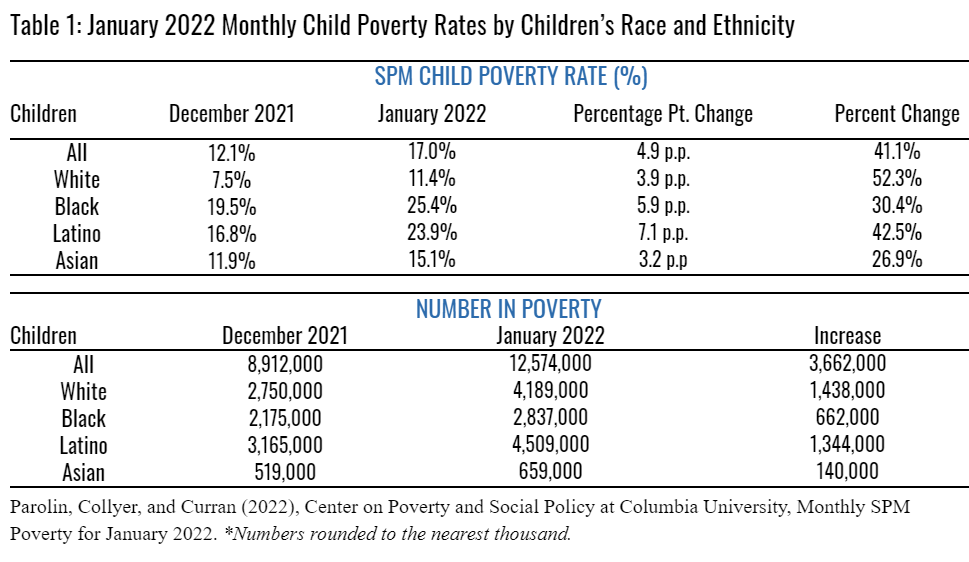3.7 million more children in poverty in Jan 2022 without monthly Child Tax Credit
The monthly child poverty rate increased from 12.1 percent in December 2021 to 17 percent in January 2022, the highest rate since the end of 2020. The 4.9 percentage point (41 percent) increase in poverty represents 3.7 million more children in poverty due to the expiration of the monthly Child Tax Credit payments. Latino and Black children experienced the largest percentage-point increases in poverty (7.1 percentage points and 5.9 percentage points, respectively).
Between July and December 2021, the Internal Revenue Service paid out six months of advance Child Tax Credit payments worth up to $250 per child aged 6 to 17 and up to $300 per child aged under 6, reaching over 61 million children in over 36 million households. By December, it was keeping 3.7 million children from poverty and reducing monthly child poverty by 30 percent. A roundup of the available research reveals that, while in place, the monthly Child Tax Credit payments buffered family finances amidst the continuing pandemic, increased families’ abilities to meet their basic needs, reduced child poverty and food insufficiency, and had no discernable negative effects on parental employment.
In past work, we found that the Child Tax Credit payment kept millions of children out of poverty in 2021 (3 million children in July; 3.5 million children in August; 3.4 million children in September; 3.6 million children in October; 3.8 million children in November; and 3.7 million children in December).
Measuring Monthly Poverty
In 2020, we established a novel method of forecasting poverty to provide monthly projections of poverty using the Supplemental Poverty Measure. Using a monthly framework, we are able to track poverty amidst changing economic circumstances as the COVID-19 pandemic and federal policy responses continue to unfold. Visit our data page to see monthly poverty trends for the US population as a whole, as well as by race/ethnicity and age groups.

